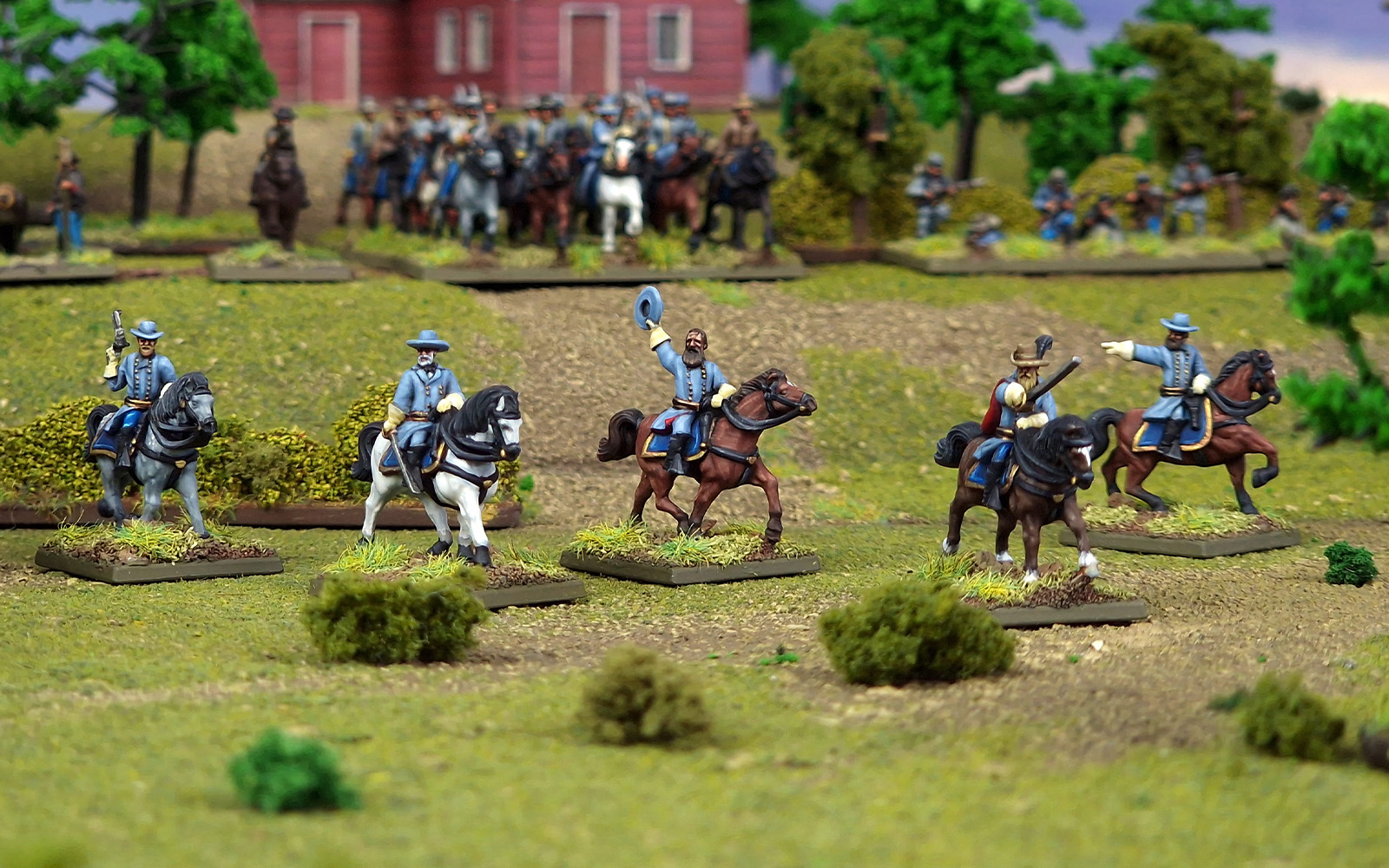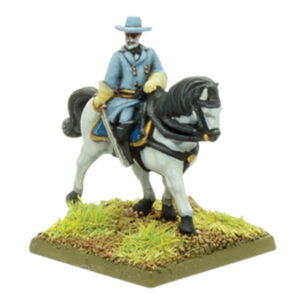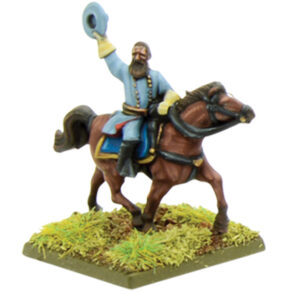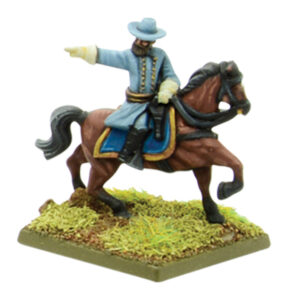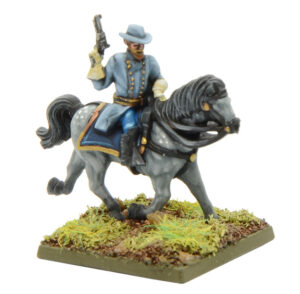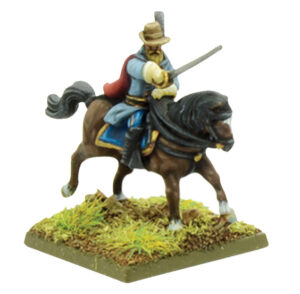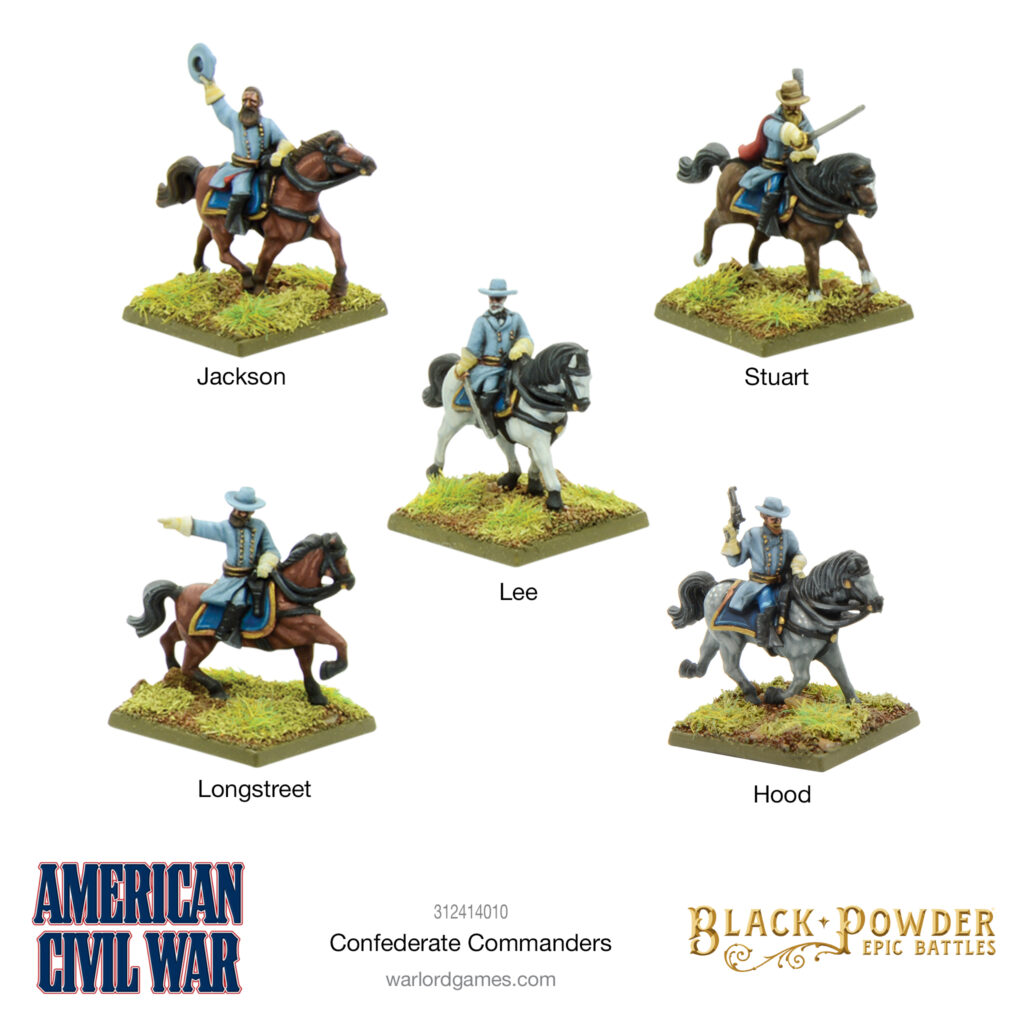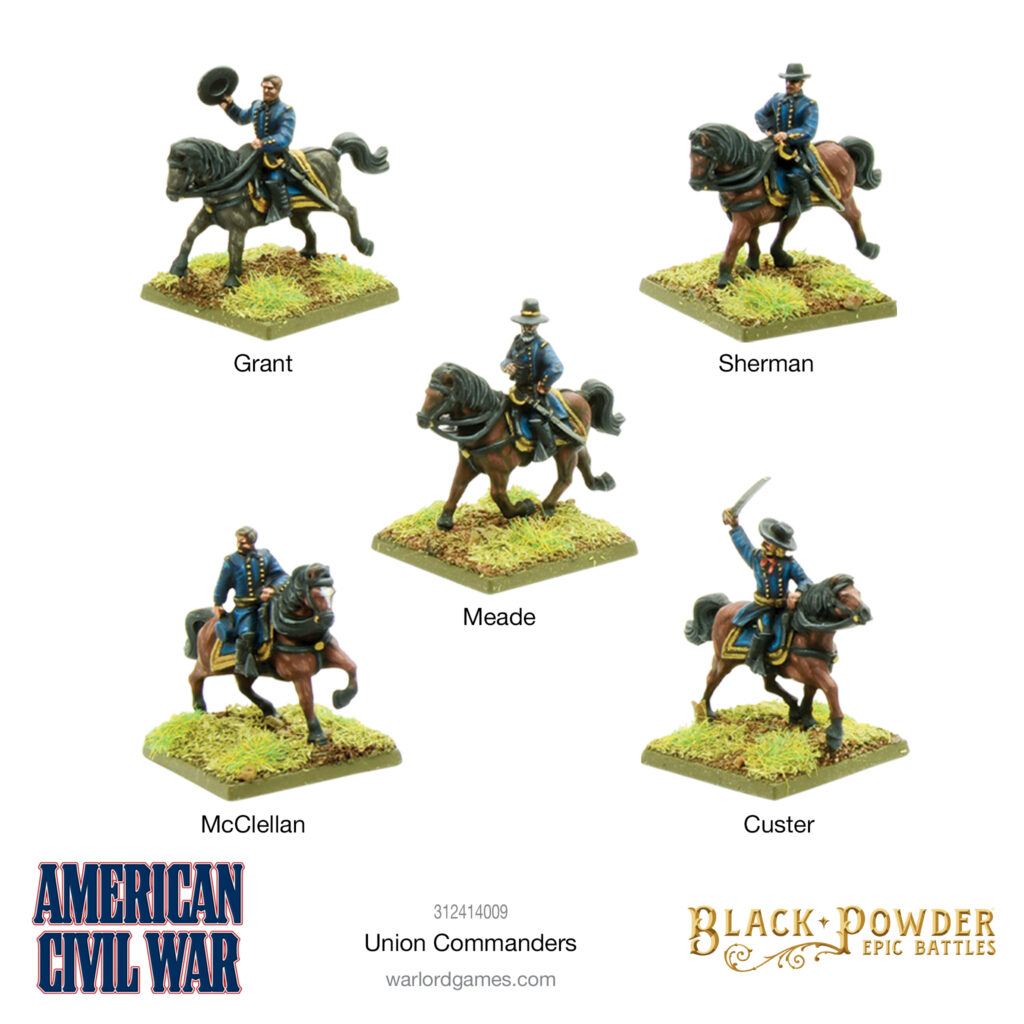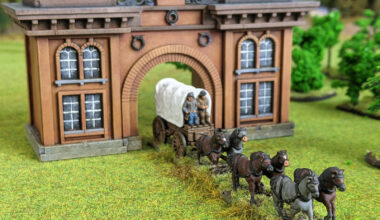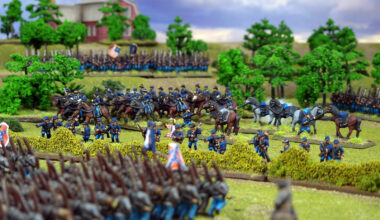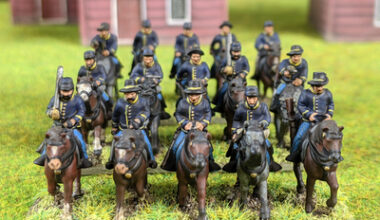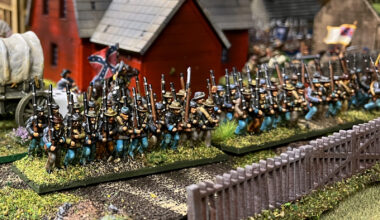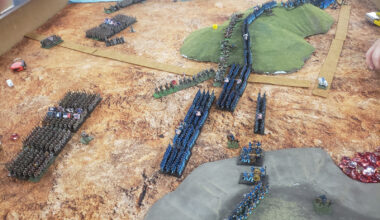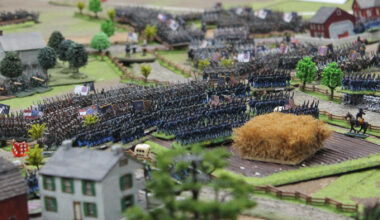With the new Epic Battles: American Civil War commanders packs, we’ll all be able to add some of the ‘big names’ of the Civil War to our armies. These renowned generals are perfect for those of us who can’t seem to roll under an eight on our Command Tests and need just a little help getting our troops moving, so now’s the perfect time to look at the men behind the models, as well as their special rules. We’ll start with the Confederate commanders.
Robert E. Lee
Leading off is of course Robert E. Lee, arguably the most talented commander of the war. The prototypical Confederate general, Lee was a West Point (the US Army’s officer training college) graduate and a pre-war regular officer who saw service in the Mexican-American War. When Virginia seceded from the Union, Lee’s loyalty to his home state was such that he resigned his commission to command the Virginian forces, officially joining the Confederacy alongside the state. Taking command of the Army of Northern Virginia after General Johnston was wounded in June 1861, he embarked on a series of actions against Union forces, driving back the larger Union Army of the Potomac on several occasions and largely preserving his own forces. Following his decisive victory at Chancellorsville, a desire to invade the North so as to push for a negotiated peace brought Lee and his men to Gettysburg. Following his defeat in that epic clash, Lee would be heavily engaged by Ulysses S. Grant’s forces during the Overland Campaign, fighting well despite being overwhelmingly outnumbered and outgunned. He would be appointed General in Chief of the Armies of the Confederate States in February 1865, but his forces would quickly be surrounded and on April 9th of that year, Lee surrendered to Grant at Appomattox Court House, effectively ending the war.
In games of Black Powder: Epic Battles, Lee is appropriately impressive. For battles fought up to June 1863, he has a mighty Command value of 10! For battles set after Gettysburg this drops to (a still respectable) 9, but he allows Confederate units within 12” to re-roll failed Morale tests. All in all, there’s no finer man to command your Confederate forces!
Thomas Jonathan ‘Stonewall’ Jackson
One of the most famous of Lee’s subordinates was Thomas Jonathan Jackson. Also a West Point graduate, he too had seen service in the Mexican-American war, before leaving the US Army to take up a position as a civilian (really quasi-military) instructor at the Virginia Military Institute (VMI) in 1851. When Virginia seceded, Jackson became first a Colonel and later a Brigadier-General in the new Confederate Army. At the First Battle of Bull Run, Jackson’s brigade of Virginians was described as standing “like a stone wall” against a heavy Union assault. The nickname stuck, and they became known as the ‘Stonewall’ Brigade, with their commander immortalised as ‘Stonewall’ Jackson. Promoted to Major-General he was a crucial component of Lee’s army, providing decisive and intuitive offensive ability as well as an indomitable spirit in defence. His corps performed strongly at Antietam and Fredericksburg, but while reconnoitring Union positions during the Battle of Chancellorsville he was shot by friendly troops in a tragic case of mistaken identity, dying eight days later. Lee mourned Jackson’s death, describing the loss as akin to losing his own right arm. A fiercely religious (and often eccentric) man, and an exceptional commander, his presence was certainly missed throughout the rest of the war.
On the tabletop, he has a great Command value of 9, and possesses the Decisive special rule. Additionally, any unit within 12” of Jackson may re-roll any failed Break test!
James Longstreet
If Jackson was the offensive hammer of Lee’s army, then James Longstreet was often the defensive anvil. Yet another West Point graduate and veteran of the Mexican-American war, Longstreet was one of Lee’s most trusted subordinates and a senior figure in the Confederate Army throughout the war, playing a major role in many of Lee’s victories. Although his postbellum support for the Republican party and friendship with Ulysses S. Grant made him deeply unpopular in the South and among many of his peers, and tarnished his military reputation, modern analysis has revealed him to be a thoroughly capable and tactically gifted, and an excellent corps commander. Described by Robert E. Lee as his “Old War Horse”, he nevertheless disagreed strongly with several of his commander’s decisions at Gettysburg, before serving in the West under the deeply unpopular Braxton Bragg at Chickamauga, where his corps performed admirably in attack. Badly wounded by friendly fire at the Battle of the Wilderness (a concerningly common occurrence for generals of the period!), he returned to serve alongside Lee until the end of the war, and rode with him to the final surrender at Appomattox Court House.
In games of Black Powder, Longstreet is Decisive, and has a Command value of 8. Reflecting his tactical acumen, he additionally only Blunders on a roll of 12 – the perfect safe pair of hands for Lee to rely on!
John Bell Hood
Yet another West Pointer (and possessor of a truly magnificent set of whiskers) was John Bell Hood. A former US cavalry officer, he resigned his commission like so many others at the outbreak of the Civil War and by early 1862 was a Brigadier General in charge of a formation that had become known as the ‘Texas Brigade’. This formation would quickly rack up a dreadful litany of casualties under Hood’s highly aggressive leadership but achieved repeated success regardless. At Gettysburg, Hood was wounded by artillery fire, losing the use of his left arm, and after recuperating was again badly hurt, this time losing his right leg. Despite this, he continued in military service and was advanced to full General at 33 in July 1864, being placed in command of the Army of Tennessee – the youngest man to command an army on either side of the entire American Civil War. Sadly, despite having proven himself a competent and courageous brigade and divisional commander, Hood’s aptitude for army-level command was sadly somewhat lacking. While his courage and fighting spirit was never in doubt, during the Franklin-Nashville campaign and the eponymous battles therein he was soundly beaten and his army functionally ceased to exist. He did not hold another command for the rest of the war.
Fortunately, on the tabletop, you command Hood, and he has a great set of rules. With a Command of 8, as well as the Aggressive and Headstrong rules, making him a great brigade (or army) commander for getting stuck in with the bayonet.
James Ewell Brown “Jeb” Stuart
Finally for the Confederates we have James Ewell Brown (rather sensible shortened to “Jeb”) Stuart. Another US Army regular in the pre-war period, Stuart became known as a consummate commander of cavalry, as well as a thoroughly dashing dandy, sporting a dapper uniform (complete with cape and feathered cap!) and fashionable facial hair. Despite this, he was teetotal, did not smoke, and was an officer of serious talent, particularly in the use of cavalry for reconnaissance and scouting. As commander of the Army of Northern Virginia’s cavalry component, he conducted numerous daring actions including several complete circumnavigations of the Union forces, stealing horses and mules as he went. This raised him to high celebrity status in the Confederacy, something Stuart happily courted. At Chancellorsville, injuries to Jackson and Hill saw Stuart take command of the Second Corps; in this role he performed excellently, although the achievement was marred by the death of his close friend Jackson. During the Gettysburg campaign, a series of misunderstandings on Stuart’s part separated his cavalry from the rest of the army, depriving Lee of much-needed reconnaissance, which became a post-war scapegoat for the subsequent defeat. During the Overland Campaign, he continued his reconnaissance and marauding work, before his death at the Battle of Yellow Tavern in May 1864.
As befits his reputation, Stuart can only command a cavalry brigade or division, but in that role has an excellent Command rating of 9, alongside the Aggressive and Headstrong rules. All in all, there’s no-one better to lead your southern cavalry into battle!
With these commanders leading your forces, you’re certain to drive the Union back in no time at all – advance!
Both Confederate and Union Commander packs for Black Powder Epic Battles: American Civil War are now available to order from the Warlord Games Webstore.
